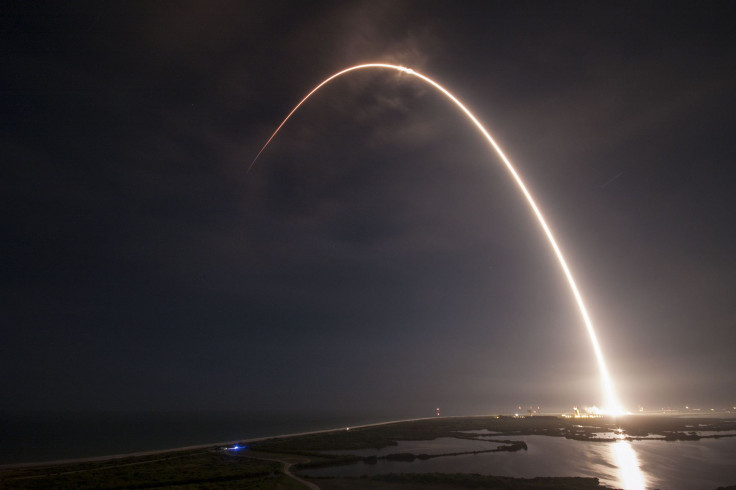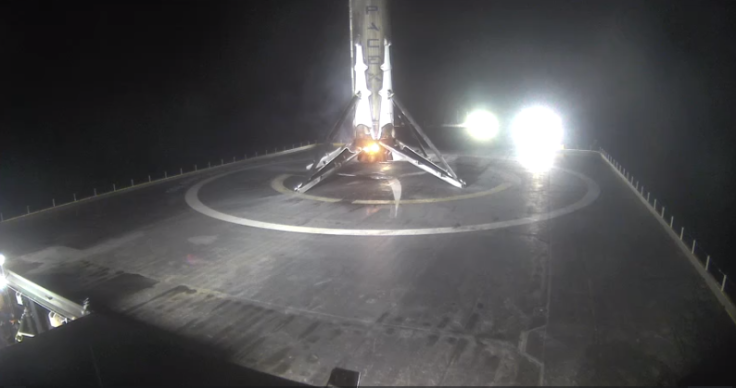SpaceX Successfully Launches Japanese Satellite And Clinches Yet Another Sea Landing

SpaceX has clinched yet another Falcon 9 landing. Early on Sunday, the private spaceflight company successfully put a Japanese communications satellite into orbit and, for the sixth time, clinched the landing of the first stage of its flagship rocket.
The event, which follows a failed attempt in June, marks the fourth time SpaceX has landed a vehicle at sea. In order to make the successful landing, the first stage of the rocket was subjected to “extreme velocities and re-entry heating.”
JCSAT-16 comms sat deployed into planned Geostationary Transfer Orbit with 36,000 km apogee (high point in orbit) pic.twitter.com/zScDgaOSzY
— SpaceX (@SpaceX) August 14, 2016
JCSAT-16, the commercial communications satellite that Falcon 9 was carrying, was put into a geostationary transfer orbit that takes it to a maximum altitude of over 22,000 miles over the Earth’s surface.
SpaceX successfully launched JCSAT-14 in May.

Success in recovering rockets is crucial to the company’s space program, which seeks to drastically cut cost of travel by reusing the rockets. Currently, the first stage of a rocket is discarded after each use, making spaceflight — even a suborbital one — dauntingly expensive.
However, the company has still not reused any of its vehicles. In June, SpaceX CEO Elon Musk said that he plans to re-launch the used rockets sometime in September or October.
© Copyright IBTimes 2024. All rights reserved.












